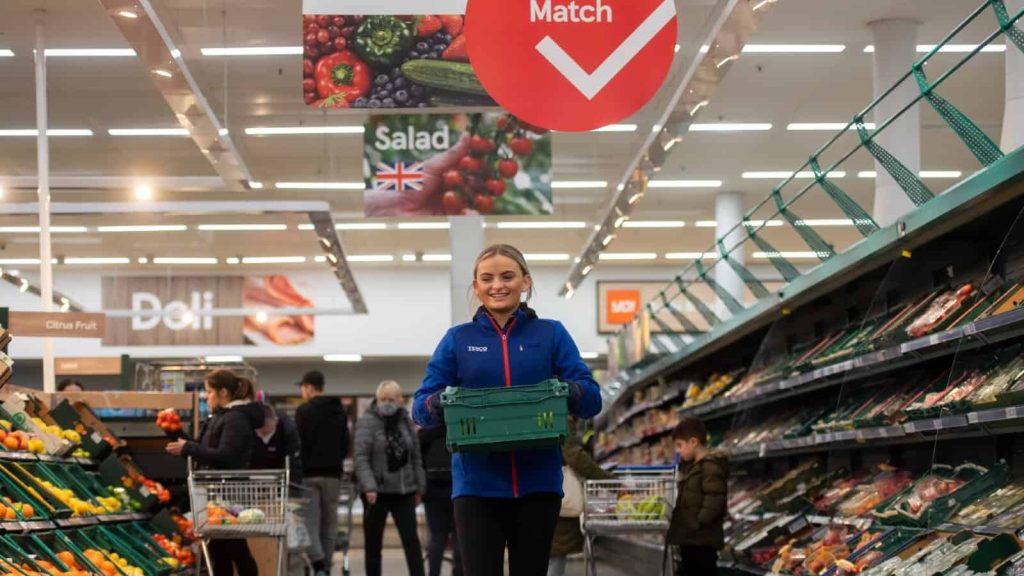The Tesco share price hit an 11-year high this month. What’s going on?


August has been an excellent month for Tesco (LSE: TSCO). The Tesco share price hit levels last seen in 2014, before an accounting scandal sunk the share price. It has been a long road back for the share, but the nationâs largest grocer has been selling at levels last seen over a decade ago.
Does that make sense? Are Tescoâs business prospects so promising that the share merits its current valuation of 18 times earnings?
A different company now to then
Back in 2014 and for some years beforehand, Tesco had ambitions to become a global retailer like Walmart or Franceâs Carrefour. That made it seem like a potentially exciting growth story.
Things look different now. The past decade has seen it substantially slim down its international footprint, for example by selling off its once sizeable Asian operations.
Meanwhile, although it remains the leading force in the UK grocery market, that market has become ever more competitive, putting downwards pressure on already thin profit margins. Last yearâs pre-tax profit margin was 3.2%, only two thirds of the 4.8% achieved 20 years before.
Understanding the investment case
I therefore do not see a compelling growth story for Tesco. Last year saw revenues (excluding VAT and fuel) move up 3%. I think they could keep growing over time, broadly in line with the grocery market and perhaps more if Tesco makes the most of its competitive advantages like a vast customer loyalty scheme.
The dividend yield of 3.3% is exactly in line with the current FTSE 100 average. So I think it looks perfectly attractive, but nothing special.
That brings me to the question of why I might want to invest money in Tesco at its current share price, versus other companies.
Valuation doesnât look attractive to me
Is it a stable choice, a sort of proxy for the UK economy thanks to its leading position in the grocery market? To some extent it may be, but the same could have been said 15 or 20 years ago, before it became embroiled in that now long-distant accounting scandal.
Despite its strong recent showing, the Tesco share price is still 28% below where it was in late 2007.
Since then it has been on a ride laced with volatility, demonstrating that even a leading company in a mature, resilient market sector can never guarantee stability.
With limited growth prospects and a decent but unremarkable yield, the price-to-earnings ratio of 18 looks too high for me.
I could be wrong. Maybe Tesco can grow earnings sharply, thanks to its retail expertise and economies of scale. Perhaps a weak economy could help it attract shoppers from pricier rivals (though it also faces a risk of losing some of its own customers to cheaper stores in such an environment).
On balance though, I do not think Tesco shares are attractively priced and will not be adding any to my shopping basket.
The post The Tesco share price hit an 11-year high this month. Whatâs going on? appeared first on The Motley Fool UK.
Should you invest £1,000 in Rolls Royce right now?
When investing expert Mark Rogers has a stock tip, it can pay to listen. After all, the flagship Motley Fool Share Advisor newsletter he has run for nearly a decade has provided thousands of paying members with top stock recommendations from the UK and US markets.
And right now, Mark thinks there are 6 standout stocks that investors should consider buying. Want to see if Rolls Royce made the list?
More reading
- As Tesco shares hit a 5-year high, what would a £5,000 investment look like now?
- I sleep easier at night because of these FTSE 100 defensive stocks
- Worried about inflation? Here are 3 dividend shares to consider buying
- Still trading near a 14-year high, how close to âfair valueâ is Tescoâs share price?
- Prediction: in 12 months Aviva and Tesco shares could turn £10,000 intoâ¦
C Ruane has no position in any of the shares mentioned. The Motley Fool UK has recommended Tesco Plc and Walmart. Views expressed on the companies mentioned in this article are those of the writer and therefore may differ from the official recommendations we make in our subscription services such as Share Advisor, Hidden Winners and Pro. Here at The Motley Fool we believe that considering a diverse range of insights makes us better investors.





